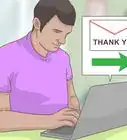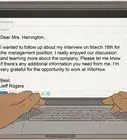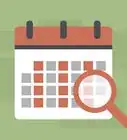This article was co-authored by Amber Rosenberg, PCC and by wikiHow staff writer, Christopher M. Osborne, PhD. Amber Rosenberg is a Professional Life Coach, Career Coach, and Executive Coach based in the San Francisco Bay Area. As the owner of Pacific Life Coach, she has 20+ years of coaching experience and a background in corporations, tech companies, and nonprofits. Amber trained with the Coaches Training Institute and is a member of the International Coaching Federation (ICF).
There are 7 references cited in this article, which can be found at the bottom of the page.
wikiHow marks an article as reader-approved once it receives enough positive feedback. This article received 17 testimonials and 100% of readers who voted found it helpful, earning it our reader-approved status.
This article has been viewed 530,187 times.
With its strong job market, high standard of living and gorgeous environment, it’s no wonder that Australia is a prime target for job-seekers all over the globe. Applying for a job “Down Under” is an intense and exciting process, one that’ll be worth the effort when you finally nail down that Australian job.
Steps
Getting a Typical Work Visa
-
1Look into an employer-sponsored work visa. If you’re determined to land a job before completing your visa application process, this is the visa for you! Your future employer will be supporting your application thanks to your relevant skills.
- This is one of two main categories of work visas in Australia.
-
2Consider a points-tested category visa. To get this visa, you’ll go through testing to determine your skills and how good of a candidate you are. This is the second of the two main categories of Australian skilled work visas.
- The idea of testing to get a visa may be stressful, get yourself prepared by researching requirements and interviewing techniques. Stay calm in the interview and be friendly. Show them how much you can bring to Australia!
- This, and every work visa category and subcategory, has some unique requirements, but all skilled work visas require, among other things, that you be under age fifty and possess “competent English” language skills. Try to learn some English before you apply for a visa by enrolling in local classes or studying online. You’ll be living in a country where English is the main language, so this will be a good skill to know!
Advertisement -
3Complete an Expression of Interest (EOI) via SkillSelect. An EOI is not a visa application in itself, but rather a way to bring yourself to the attention of Australian employers and government entities, who may in turn choose to support your subsequent visa application. If you have the right mix of attractive skills and qualities, an employer or government agency may nominate you for an appropriate work visa.[1]
- You’ll need a completed EOI to apply for a points-tested visa.
- A completed EOI is not required of, but is available to, applicants for an employer-sponsored visa.
- For more information, head on over to SkillSelect at http://www.border.gov.au/Trav/Work/Skil#.
-
4Meet the health and language requirements for a work visa. Before you can complete a work visa application, take a quick trip to the doctor so you can provide documentation of a completed health examination. You’ll also need to demonstrate English proficiency by scoring well on one of several recognized exams.
- Check out English classes offered in your area. Head to a local clinic for recommendations on a good doctor to see for your health exam. Let your teachers and doctor know that you’re preparing for a visa application to Australia and they’ll be happy to help you!
- For more on health exam requirements, visit http://www.border.gov.au/Trav/Visa/Heal/meeting-the-health-requirement.
-
5Verify that your qualifications are valid in Australia. Consult the Australian Skills Recognition Information website to find out if your qualifications will need to be confirmed by a relevant professional organization. Depending on your profession and place of study, it may be necessary to complete a bridging course or additional study. Don’t think of this as additional testing, but rather as a way to prove that your skills will be useful not just in your home country, but in Australia as well!
- Being able to state your qualifications in Australian equivalents will be a big help when you apply for jobs.
-
6Maximize your chance of getting a visa. It may be harder to obtain a visa if you don’t qualify as a skilled migrant, so focus on making yourself the most attractive applicant possible. Earn a professional qualification or gain some work experience before applying. If your English is not fluent, you may consider taking a language course with a recognized provider.
- Some work visa subcategories are regionally-focused, so ask if you can apply for a visa in a region with less job competition, or higher demand for certain jobs.
- If the visa process seems complicated and daunting to you, don’t worry; many people feel this way! Take the time to familiarize yourself with all the intricacies of the procedure by doing research online or asking questions at an Australian embassy or consulate. Check out the Australian government’s website for a wealth of useful immigration information.[2]
-
7Submit your visa application. If you require a visa to work in Australia, this will be your first priority! Prospective employers will ask about your immigration status, and having your visa (or at least having started the application process) is a prerequisite for most job vacancies.
- You can apply online at http://www.border.gov.au/Trav/Visa/Appl.
- Remember, visa priority is given to people who have skills, qualifications and experience in shortage occupations, so dust off your resume and brag a little!
Exploring Other Visa Options
-
1Look into a Temporary Graduate Visa. If you’re a foreigner who has just graduated from an Australian higher education institution, you’re in luck: you may be eligible to for a special visa that will enable you to stay and work in the country. You’ll need to be under age fifty, have an existing valid visa (e.g. a student visa), meet language and education requirements, and have eligible and relevant skills.
- There are two “streams” of this visa available to graduating students, based on factors like your skills and the nature of your educational experience in Australia.
- For more information on and application materials for the Temporary Graduate Visa, see https://immi.homeaffairs.gov.au/visas/getting-a-visa/visa-listing/temporary-graduate-485.
-
2Consider a working holiday. Maybe you’re younger than thirty and want to travel across Australia, making a bit of money to cover your expenses as you go. In this case, you may be eligible for either a Work and Holiday Visa (subclass 462) or a Working Holiday Visa (subclass 417). These visas may permit you to stay and work in the country for up to a year.
- You’ll need to be travelling without dependent children and have enough money (roughly $5000 Australian) to cover expenses and a plane ticket home.
-
3Look out for scams. Sad to say, but there are many visa con artists out there, so use caution when someone offers to help you get an Australian work visa. The Australian government keeps a list of common and current scams at http://www.border.gov.au/Trav/Visa/migration-fraud-and-scams. For instance, don’t fall for scam phone calls demanding immediate payment for a visa renewal, and be very cautious regarding promises of an Australian visa and job (with an initial payment) on job websites. Use your common sense and stick to official Australian government sites; the URL will end with “.gov.au”!
- It is illegal for third parties (employers, etc.) to financially gain from nominating or sponsoring someone for a visa. In other words, a potential Australian employer cannot ask you to pay a fee ahead of time for sponsorship, or deduct from your paycheck after the fact. You might be charged legitimate professional services fees, though, which is okay. Consult an official at your Australian embassy or consulate if you want to make sure a payment is legitimate.[3]
Finding Jobs and Preparing Applications
-
1Target an industry or economic sector. If you haven’t decided on the industry you’d like to work in, choose wisely! The major industries in Australia are agriculture, mining, tourism and manufacturing. Mining, financial services, tourism and telecommunications have had the most growth in recent years, which means continued opportunities and job security!
- Keep an eye out for “Skills Australia Needs” events or information booths at skilled migration conferences worldwide.
-
2Search methodically and diligently for job openings. Millions of vacancies are posted online. You can use common online job sites, or government-supported sites. If the wealth of information and opportunities seems intimidating to wade through, stay focused on the industry, job or region you’d most like to work in and tailor your searches towards those preferences. Potential jobs will pop up in no time!
- Check Australian newspaper listings for jobs that aren’t posted on online sites. Check out the major papers like The Age (Melbourne), Sydney Morning Herald (Sydney), The Courier-Mail (Brisbane) and The West Australian (Perth).
- To learn about vacancies in a particular organization of interest, consult the recruitment section of its homepage.
-
3“Aussiefy” your CV. It is important that your CV (also called a résumé in Australia) is in the Australian style. It won’t look too different from a CV elsewhere, but will have a few key differences. Australian CVs, for example, tend to be longer than American versions. More space to show off your great experiences and skills![4]
- Although they’re usually longer, Australian CVs highlight essential information on the first page. Use categories like "Career Summary" (a brief statement), "Key Skills," "Key Qualifications," and sometimes "Key Training" and/or "Key Affiliations."
- Look online for samples or templates of Aussie-style CVs and cover letters. Don’t copy anyone’s format exactly, but use it as inspiration to make your CV appropriately “Aussie” while reflecting your own unique brilliance.[5]
-
4Take the time to write a tailored cover letter. Generic, one-size-fits-all cover letters work as poorly in Australia as they do everywhere else, so put in some effort to make each cover letter shine. Make sure to emphasize that you have been granted permission to work in Australia or are in the process of applying. Provide an Australian postal address and telephone number in your CV if possible.[6]
Applying for and Getting a Job
-
1Utilize your contacts. Even today, many jobs aren’t advertised through the media or online, so your personal contacts are going to be key! Take advantage of networking opportunities and expand your networks by joining professional associations. If you establish a contact within a company, inform the contact when you make an application. It may just get your CV to the top of the pile.
- Whether it’s someone you worked with during a college internship or someone you met surfing, networking contacts are the crucial element in finding and landing a job.
-
2Send your CV and a cover letter. Target every potential employer and recruitment agency in the region in which you plan to settle. Speculative ("cold") applications are common in Australia, so take a chance and apply even if there’s no advertised vacancy, especially if you have made contact with someone within your network.
- When in doubt, send in an application. Remember, your goal at this point is to secure interviews. You’ve got nothing to lose![7]
-
3Follow up. If you do not receive a confirmation of your submission, contact the human resources department after 24 hours. Likewise, don’t hesitate to contact the company if you have not received a response within a couple of weeks.[8]
- This is common practice in Australia, and is not considered inappropriate. In fact, it demonstrates your enthusiasm and your determination to land the job.
-
4Plan to attend onsite interviews. If you are called for interview, try to be in Australia to attend in person. Very few employers will engage candidates on an unseen basis, although you might suggest a videoconference (e.g. Skype) interview if you can’t be physically present. Remember to bring (or send along) copies of your work visa and references for employers to examine.
- When it comes to interviews, Australian employers value punctuality, optimism, and the ability to provide concrete examples to illustrate a point. So be on time, upbeat and ready with examples!
- They also like to gauge your personality by asking about your hobbies, strengths and weaknesses, and so on. Be yourself and show them how well you’ll fit in with their company.
Expert Q&A
-
QuestionHow can I hook a company with my cover letter?
 Amber Rosenberg, PCCAmber Rosenberg is a Professional Life Coach, Career Coach, and Executive Coach based in the San Francisco Bay Area. As the owner of Pacific Life Coach, she has 20+ years of coaching experience and a background in corporations, tech companies, and nonprofits. Amber trained with the Coaches Training Institute and is a member of the International Coaching Federation (ICF).
Amber Rosenberg, PCCAmber Rosenberg is a Professional Life Coach, Career Coach, and Executive Coach based in the San Francisco Bay Area. As the owner of Pacific Life Coach, she has 20+ years of coaching experience and a background in corporations, tech companies, and nonprofits. Amber trained with the Coaches Training Institute and is a member of the International Coaching Federation (ICF).
Pacific Life Coach Show off your personality and explain why you're a good fit for the position. Tell them about relevant skills and stories from past jobs that showcase them.
Show off your personality and explain why you're a good fit for the position. Tell them about relevant skills and stories from past jobs that showcase them. -
QuestionHow do I get a visa to get a job in Australia?
 Community AnswerApply for permanent residency through immigration; skilled visas are available.
Community AnswerApply for permanent residency through immigration; skilled visas are available. -
QuestionHow can I get a job in Australia if I am in high school?
 Community AnswerContact local businesses in your area to see if they are hiring.
Community AnswerContact local businesses in your area to see if they are hiring.
References
- ↑ http://www.border.gov.au/Trav/Work/Skil#
- ↑ http://www.border.gov.au/Trav/Visa
- ↑ http://www.border.gov.au/Trav/Work/Work-1
- ↑ http://www.sydneymovingguide.com/how-to-write-a-resume-for-job-sponsorship-in-australia/
- ↑ http://www.international.mq.edu.au/pdfs/sample%20cover%20letter%20and%20resume%202012.pdf
- ↑ http://career-advice.careerone.com.au/resume-cover-letter/resume-writing/resume-writing-the-basics/article.aspx
- ↑ http://career-advice.careerone.com.au/resume-cover-letter/resume-writing/resume-writing-the-basics/article.aspx
- ↑ https://www.businessinsider.com.au/heres-how-long-you-should-wait-before-you-follow-up-on-your-job-application-2012-1
About This Article
The best way to get a job in Australia is to apply for a points-category visa, which will use a series of tests to determine your useful skills. Choose a growing industry, like finance or tourism, and search for job openings online and in Australian newspapers. “Ausseify” your CV by making it a few pages longer, and send it with a cover letter to employers in your desired region. Call the company if you haven’t heard back within a few weeks to show your enthusiasm for the job. For interview tips and other visa options, read on!
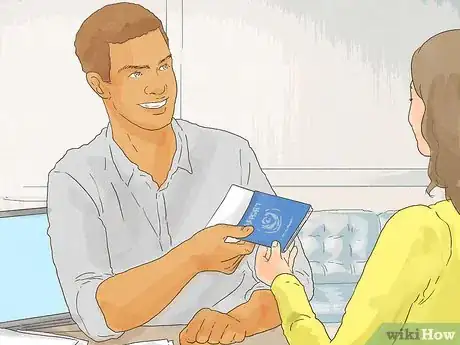
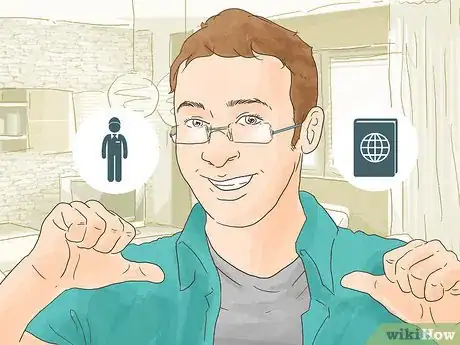
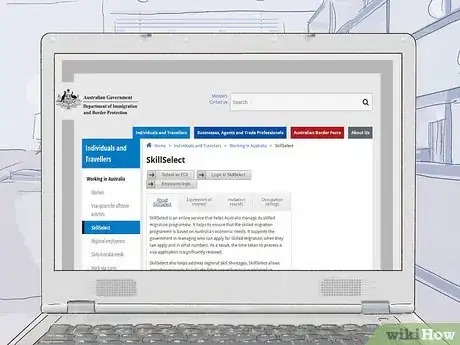

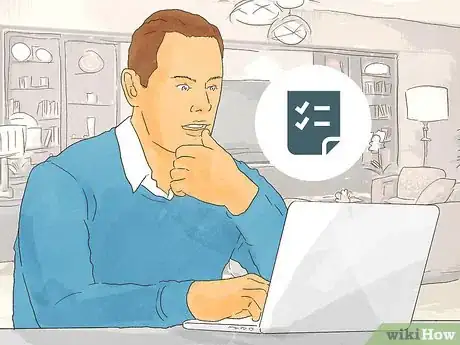
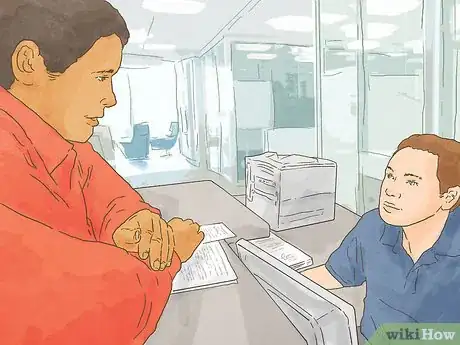




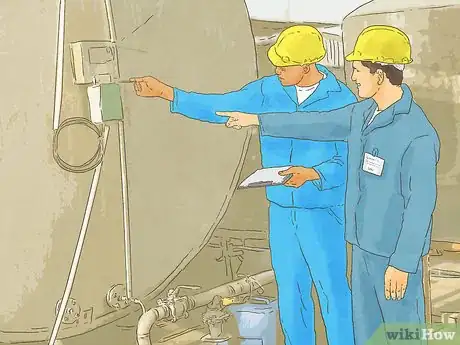
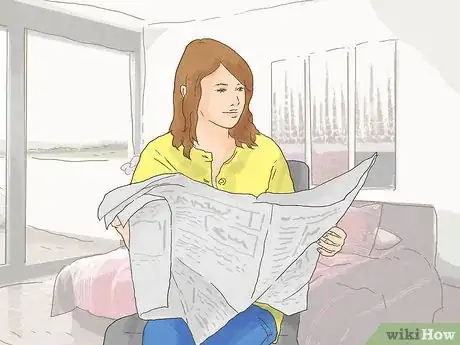
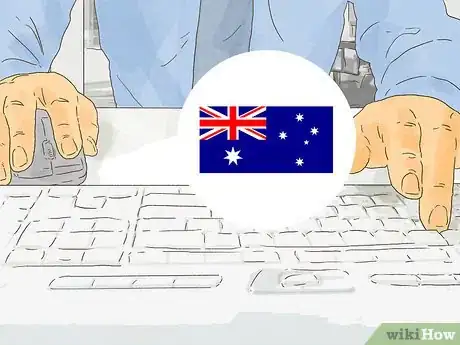
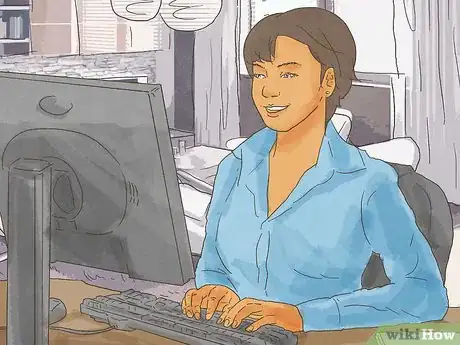
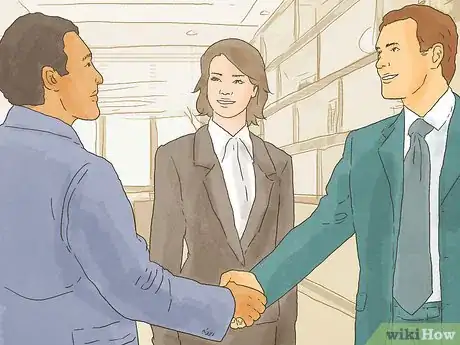
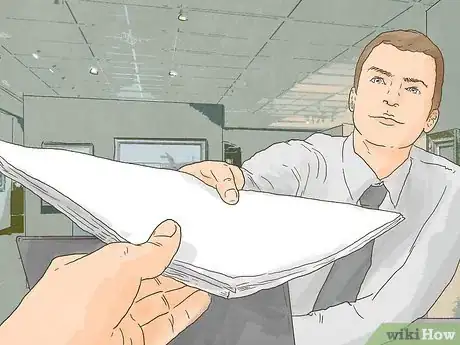
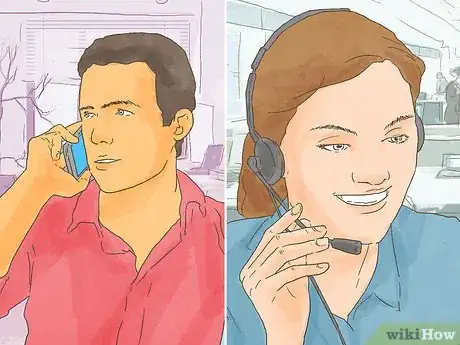
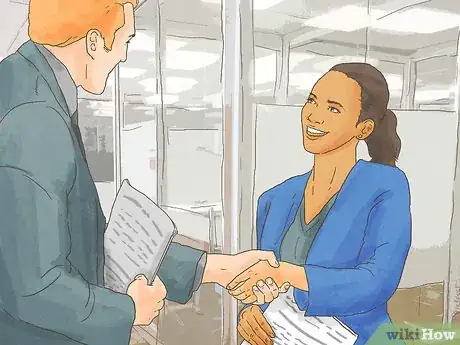


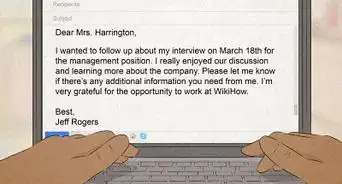
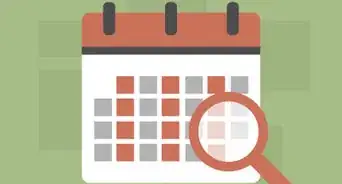

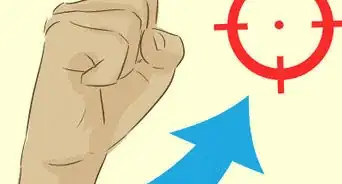


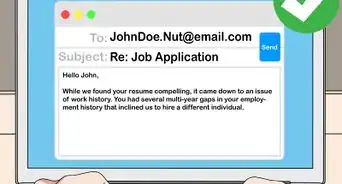



-Step-20-Version-2.webp)













